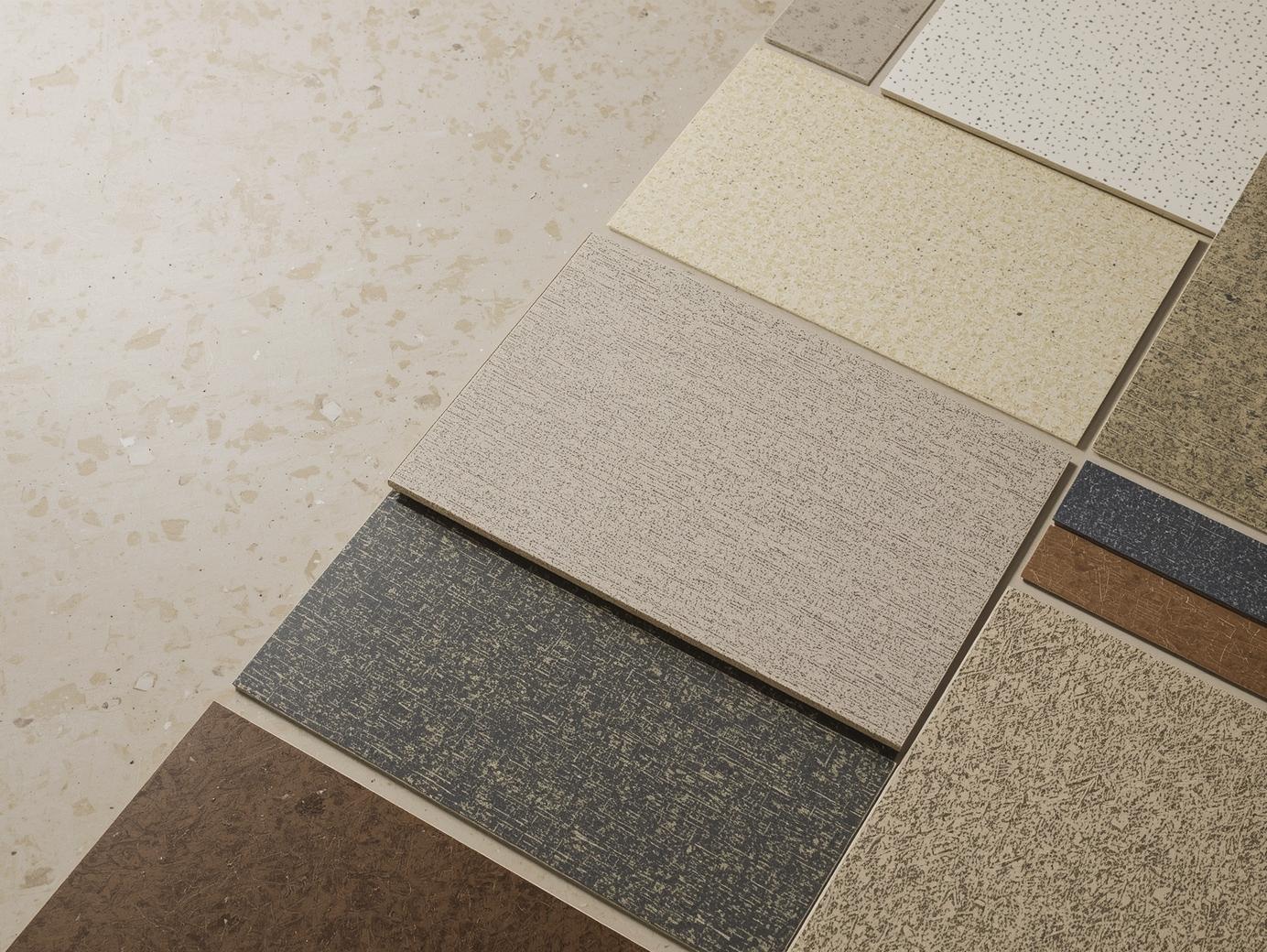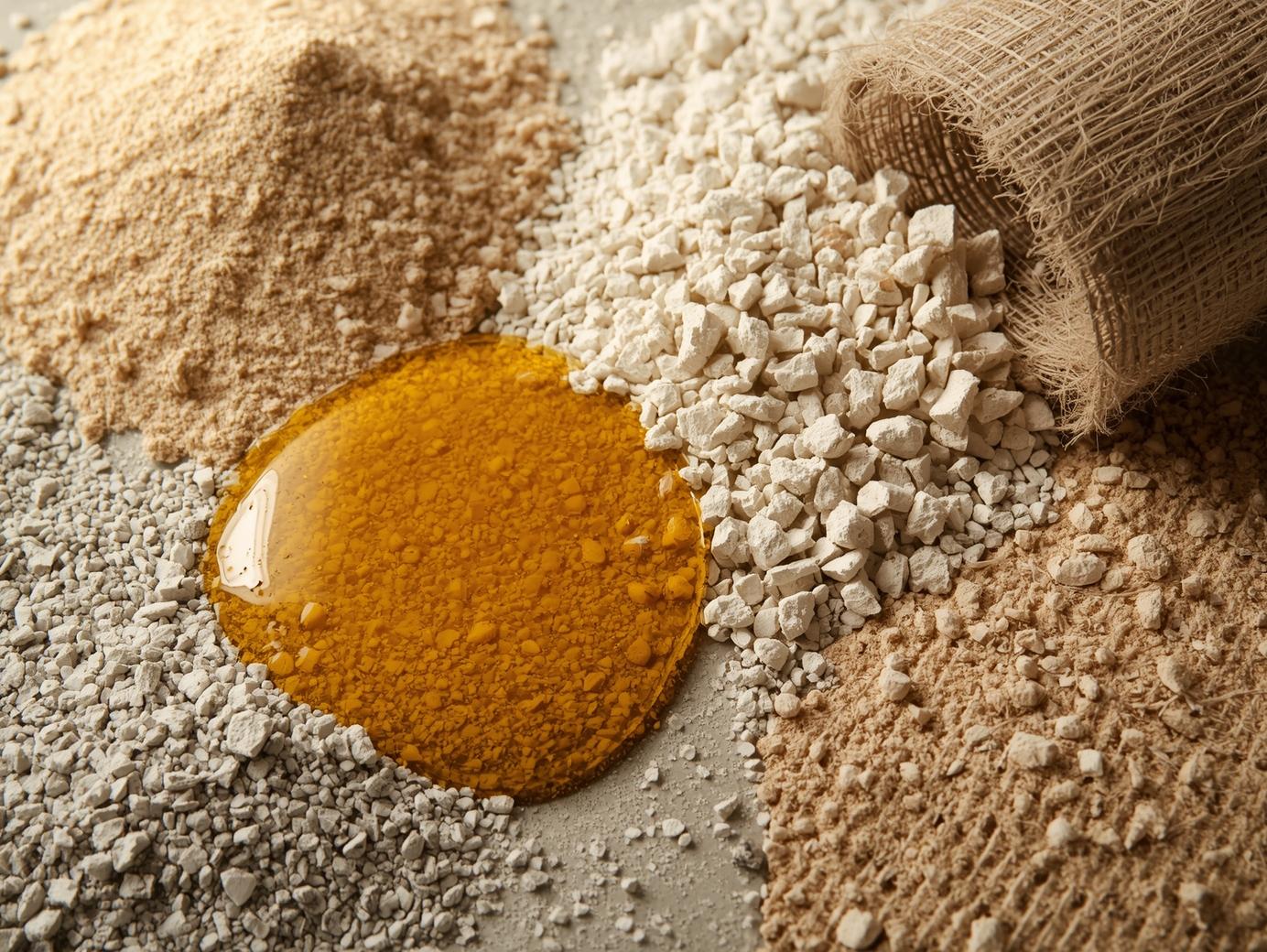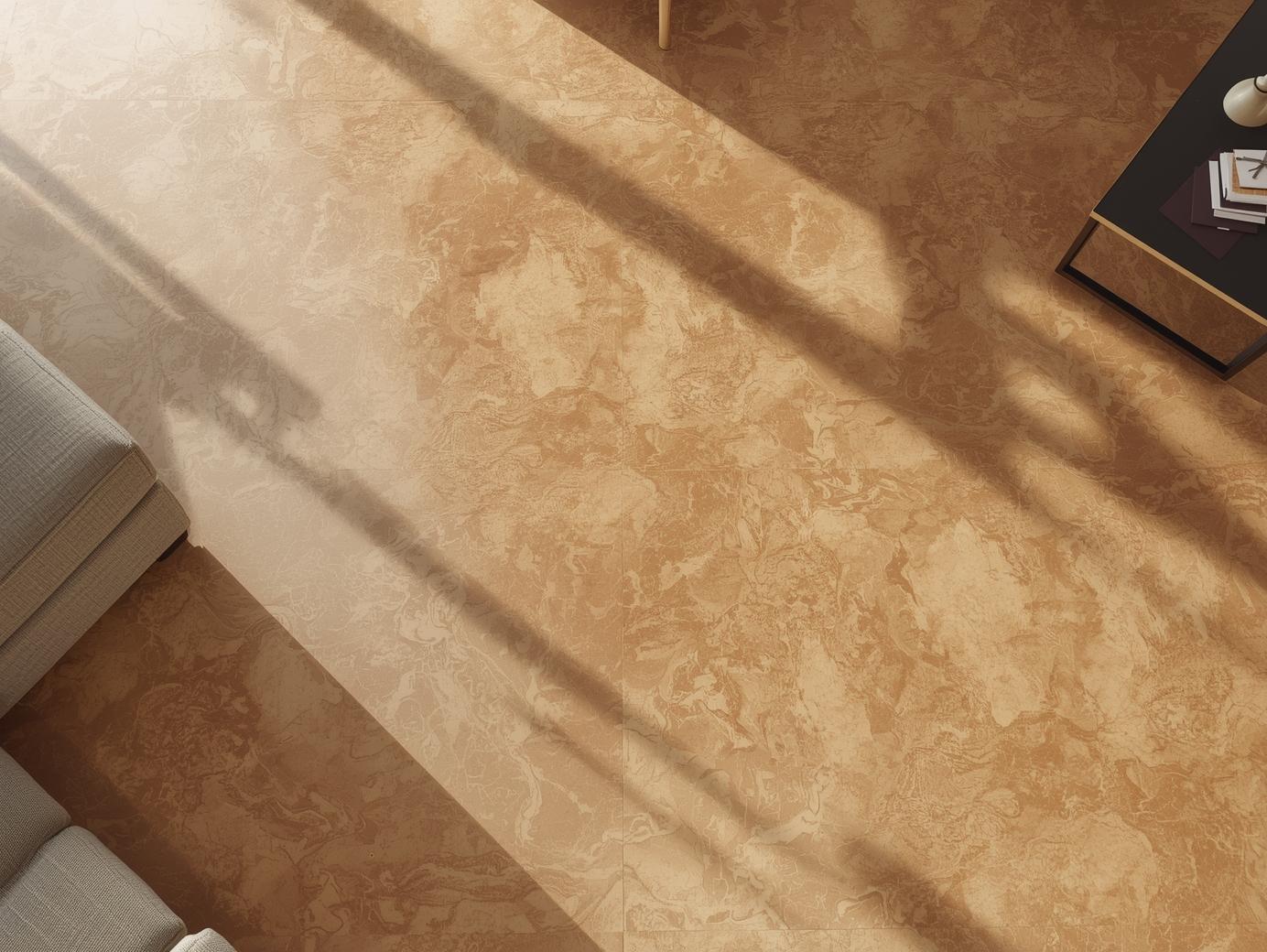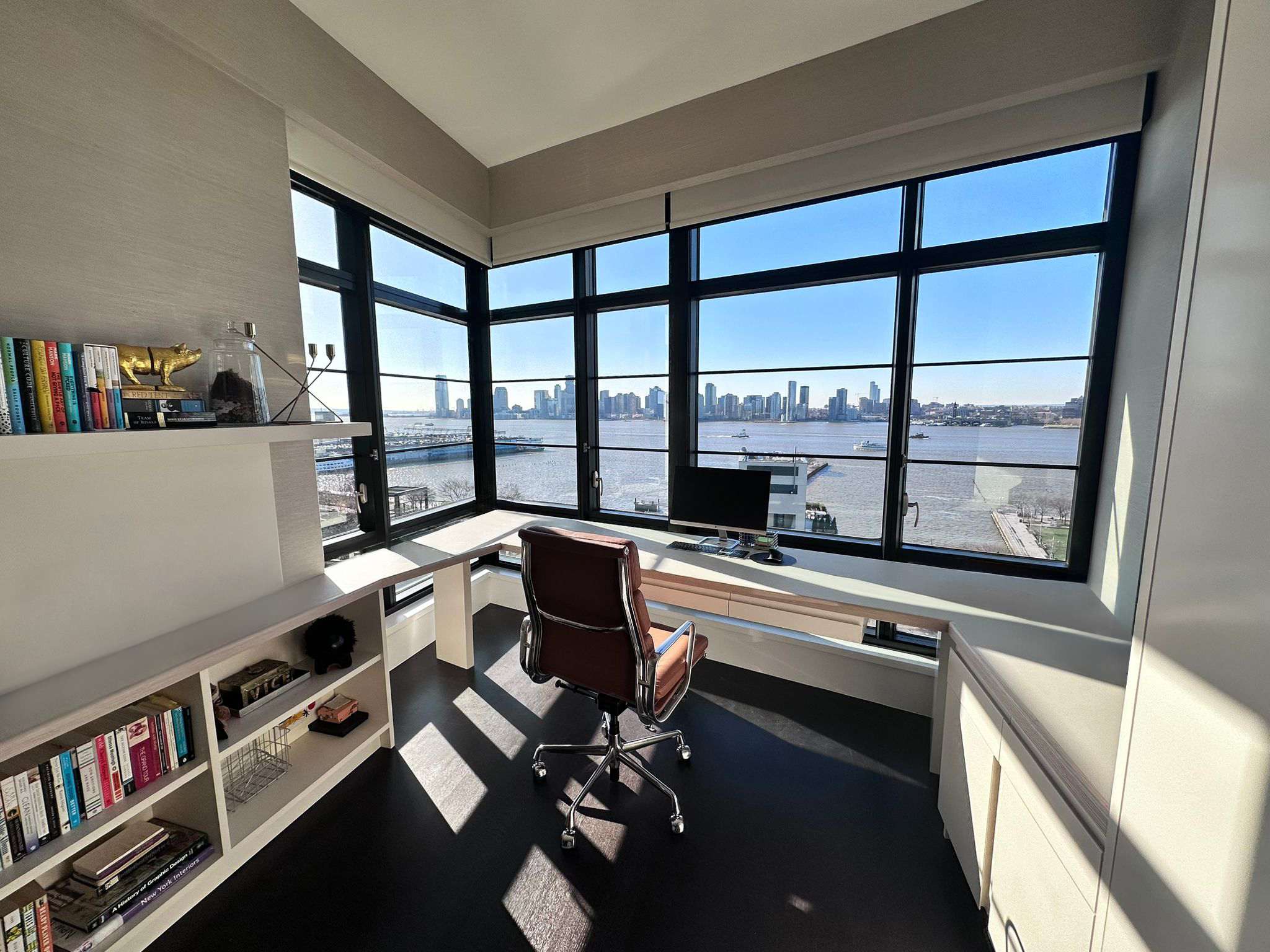What is Forbo Linoleum? Technical Applications in Floors and Furniture

Forbo linoleum is a natural surface material made by Forbo Flooring Systems, primarily composed of linseed oil, wood flour, limestone, and jute backing. Sold under the Marmoleum brand, it is used for flooring, furniture, and interior surfaces due to its durability, anti-static properties, low VOC emissions, and sustainability. It's suitable for commercial, residential, and institutional applications where cleanability and long-term performance are important.
Originally developed in 1860 by Frederick Walton, linoleum quickly became a standard surface in homes and commercial buildings, especially throughout Europe. While its popularity in the U.S. declined in the mid-20th century, it has recently made a comeback, largely because of increased demand for materials that are both natural and low-maintenance.
Linoleum's appeal lies in its easy upkeep and long lifespan. Unlike wood, it doesn't require periodic refinishing. Thanks to modern surface treatments, it resists daily wear and typically remains in good condition for decades. In fact, many users replace their linoleum flooring not because it's worn out but simply to update the look.
This guide outlines the technical characteristics, installation procedures, maintenance guidelines, and practical applications of Forbo linoleum in both flooring and millwork.
Material Composition & Technical Traits

Natural ingredients that make up Forbo linoleum: linseed oil, wood flour, limestone, and jute backing
Core Ingredients: Wood Flour, Linseed Oil, Limestone, Jute Backing
Forbo linoleum is a natural surface made from a blend of linseed oil, wood flour, limestone, pigments, and a jute textile backing. Linseed oil serves as the primary binder and undergoes oxidation to cure into a solid yet flexible matrix. The wood flour contributes structural strength and density, while limestone acts as a mineral filler, increasing durability. Pigments provide through-body color, and the jute backing gives dimensional stability during application and long-term use.
This material profile results in a surface that is slightly elastic, non-plastic, and consistent. Unlike synthetic laminates, linoleum can absorb micro-stresses, resists curling, and performs well under temperature and humidity variation.
Anti-Static, Health & Indoor Air Quality Benefits
One of the key performance benefits of linoleum is its natural anti-static property. This reduces the attraction and buildup of dust, an important factor in environments with electronics, controlled air, or sensitive users. It also contributes to easier cleaning and lower airborne particulate levels.
Marmoleum is also free from added formaldehyde, plasticizers, or phthalates. It emits virtually zero VOCs, making it a strong contributor to healthy indoor air quality. These health and air quality benefits help create spaces where people can work, learn, and relax comfortably. Surfaces do not off-gas, and microbial growth is naturally inhibited, especially when maintained with approved cleaners and finishes.
Durability & Wear Resistance
Durability is one of Marmoleum's core strengths. The surface is protected with a factory-applied finish such as Topshield Pro, which improves resistance to scratching, scuffing, and chemical exposure. Linoleum performs well in high-traffic areas and recovers from minor compression caused by furniture or foot traffic. Proper sealing at edges prevents delamination, making it suitable even for areas with heavy movement or usage.
When correctly installed and maintained, Marmoleum surfaces regularly exceed 20 years of service life, outperforming many synthetic options in real-world cost-to-performance ratios.
Flooring Applications & Performance

Forbo linoleum flooring installation in a modern residential setting
Flooring Use: Where Linoleum Excels
Forbo linoleum is suitable for commercial and residential environments. It is frequently specified for office buildings, education centers, healthcare spaces, and lobbies. In residential settings, it offers a low-maintenance, natural flooring solution that aligns with wellness and sustainability goals.
Because of its dimensional stability, anti-static performance, and cleanability, it performs reliably across various use cases, even where chemical exposure or high foot traffic is expected.
Tiles vs Sheet Rolls: Technical Trade-offs
Forbo linoleum comes in two primary formats: sheet goods and modular tiles or planks. Sheet installations offer minimal seams and improved resistance to moisture ingress, making them ideal for hygiene-sensitive or open-plan environments. Tiles and planks allow for more flexible design layouts and simplified replacement in smaller or irregular spaces. Both formats share the same material composition and durability, so format selection depends on the environment, maintenance expectations, and layout complexity.
Initial Maintenance & Long-Term Care
After installation, linoleum should be cleaned to remove adhesive residue and optionally polished if the space demands additional protection. Allow adhesives to fully cure per manufacturer guidance before heavy traffic resumes.
Routine maintenance includes damp mopping with pH-neutral cleaners and avoiding excess water. Microfiber tools can help reduce abrasion during daily cleaning. Periodic reapplication of polish or surface protectants may be recommended depending on traffic levels.
Because the surface is semi-porous but sealed, dirt does not embed deeply. As a result, cleaning cycles are efficient, and the surface retains its aesthetic and hygienic properties with minimal intervention.
Dust, Dirt Control & Clean Environments
Linoleum's anti-static property helps reduce airborne dust. This benefits HVAC efficiency and reduces fine particle accumulation in occupied zones. In combination with routine cleaning, the result is a cleaner, healthier environment that meets the expectations of sensitive use cases such as clinics, labs, and wellness spaces.
Flooring Cost
According to Angi, installing linoleum flooring generally costs between $650 and $4,800, or about $3 to $12 per square foot, with an average cost of $1,760.
Furniture, Millwork & Surface Integration

West Village renovation by CooperBuild featuring custom Forbo linoleum desk and bookshelves
Furniture Linoleum: Application in Desks, Panels, and Cabinets
Furniture linoleum is a variation of Marmoleum designed for vertical or horizontal custom millwork surfaces. Common applications include workstations, table tops, drawer faces, wall cladding, and cabinetry panels. The finish is matte and soft to the touch, with low reflectivity and high resistance to fingerprints and surface oils.
In office and education settings, furniture linoleum offers a cohesive aesthetic when paired with matching or complementary flooring. It also provides tactile comfort and long-term performance with minimal cleaning requirements.
Bonding, Finishing & Edge Details
Furniture linoleum must be bonded to a stable substrate such as MDF, plywood, or composite cores using high-quality contact adhesives. Panels should be acclimated before bonding. For best results, pre-lamination and CNC machining can ensure clean edges and proper alignment.
Edges should be sealed with clear matte finishes or finished with linoleum strips or matching edge banding. Buffing may be used to smooth transitions. For curved or detailed installations, heat-assisted forming may be applied to avoid surface cracking.
Design Flexibility & Color Matching
Marmoleum comes in a wide range of solid and muted colors, allowing design teams to match brand palettes, segment spaces visually, or blend surfaces with surrounding finishes. The color-through structure ensures that even after years of use, the appearance remains consistent. Because it can be precision-cut and even laser-etched, Marmoleum is compatible with custom signage, inlays, and architectural features.
Installation, Lifecycle, and Sustainability
Storage, Acclimation & Installation Best Practices
Before installation, linoleum should be stored flat in a dry, climate-controlled space and allowed to acclimate to ambient conditions for at least 24 to 48 hours. Substrates should be flat, clean, and dry (moisture <3%). Installers must follow manufacturer-specified adhesives and working time instructions to ensure proper bonding and dimensional stability.
Failure to follow these protocols may result in edge lift, bubbles, or shortened material life especially in large surface areas or under heavy use.
Initial Maintenance, Sealing & Protection
Once installed, adhesives must cure fully before deep cleaning or applying surface coatings. On furniture, edge sealing is critical to protect against moisture or delamination. Felt pads should be added to furniture feet to reduce surface abrasion. Dragging items across unprotected surfaces should be avoided.
Routine Cleaning, Care & Rejuvenation
Both flooring and furniture applications require low-effort care. For floors, routine damp mopping and occasional surface polishing are generally sufficient. For furniture linoleum, wiping with water and mild soap handles most cleaning needs. Minor scratches can be spot-repaired or gently buffed. If needed, surfaces may be rejuvenated with approved linoleum care products.
Sustainability, End-of-Life & Reuse
Forbo linoleum is composed of approximately 97% natural materials and is biodegradable under controlled disposal environments. The material is carbon neutral from cradle to gate and supports low-waste fabrication processes. Off-cuts may be recycled or repurposed. Its lifecycle performance, minimal chemical load, and renewable sourcing make it a strong contributor to LEED, WELL, and other green certifications.
Practical Use Cases & Specifier Tips
Integrated Design Across Floors and Furniture
CooperBuild's ability to install both flooring and furniture linoleum allows for a consistent material palette across interior spaces. This creates seamless transitions between floor and vertical surfaces, simplifies maintenance routines, and maintains a unified finish standard across components.
Performance Across Sectors
In healthcare, linoleum offers hygiene, durability, and chemical resistance. In education, it provides anti-static, scratch-resistant surfaces ideal for shared environments. Offices benefit from acoustic dampening and cleanability. In homes, it offers a non-toxic, high-design alternative to traditional laminates.
Specifier Guidelines
Always confirm substrate moisture and flatness. Request full technical data, including wear classification and coefficient of friction. Account for expansion joints and transitions in large installations. Clearly define maintenance cycles in project documentation. Educate clients on the expected performance of a natural surface. It is not high-gloss, and its strength lies in its tactile, resilient character.
Where to Buy
For those interested in bringing the benefits of Forbo flooring into their projects, purchasing is straightforward and accessible. Authorized dealers and distributors, such as Floor City, are among the most reputable sources for Forbo products in the United States. Floor City offers a comprehensive selection of Marmoleum sheets and linoleum tile flooring, shipping nationwide to meet the needs of both residential and commercial customers.
In addition to working with trusted distributors, customers can also contact Forbo directly through their website or by email to learn more about their product offerings and sustainability mission. Forbo's flooring solutions are designed for easy installation and maintenance, making them ideal for a wide range of applications from DIY home renovations to large-scale commercial projects. With an extensive palette of design possibilities and a reputation for durability and health-conscious materials, Forbo flooring is a smart choice for anyone looking to create sustainable, beautiful, and easy-to-maintain spaces.
Final Thoughts on Forbo Flooring
Forbo flooring stands out as a top choice for those seeking sustainable, durable, and healthy surface materials for a variety of environments. With a product range that includes furniture linoleum, linoleum tiles, and other innovative solutions, Forbo combines natural ingredients like linseed oil and wood flour to create surfaces that are both resilient and comfortable. The initial maintenance is simple, and the long-term durability ensures that your investment will stand the test of time.
At CooperBuild, our combined flooring and millwork capability enables us to deploy this material across full interior scopes, delivering consistent performance, unified appearance, and long-term value.
FAQs
About CooperBuild Team
CooperBuild's team specializes in high-performance flooring and installations, bringing expertise in sustainable materials and technical applications for luxury projects.
Flooring & Millwork Specialists
Subscribe to Our Newsletter
Get the latest insights, trends, and news from the construction industry delivered straight to your inbox.
We respect your privacy. Unsubscribe at any time.

